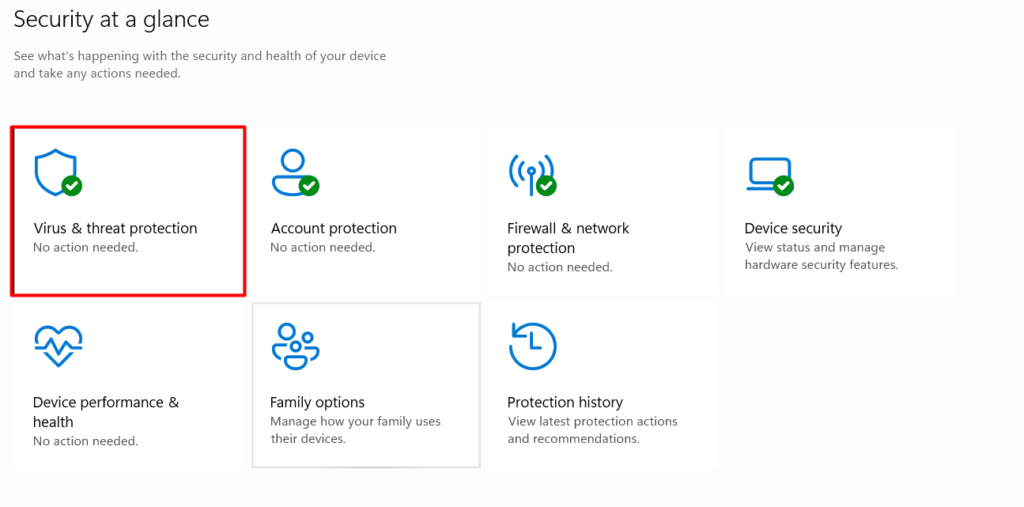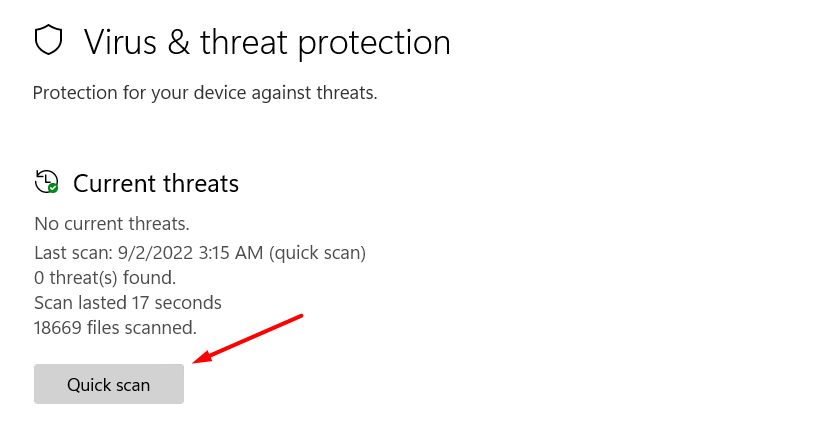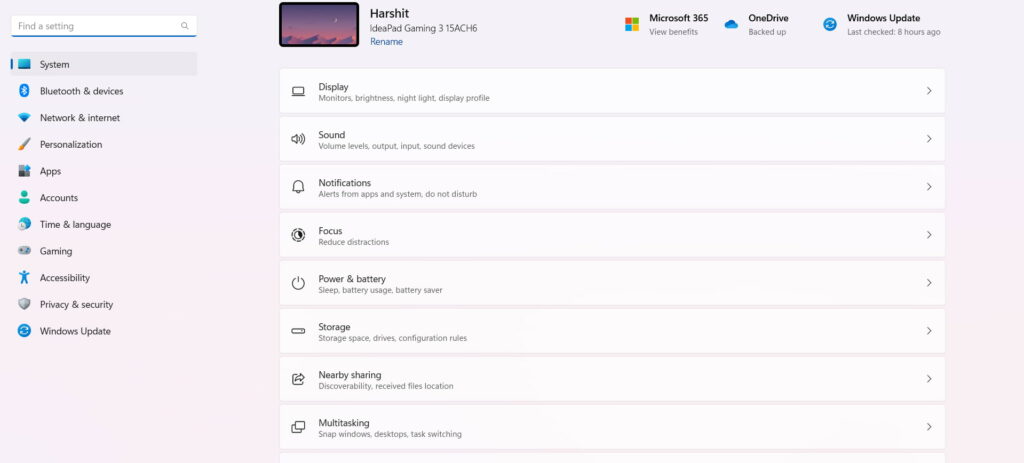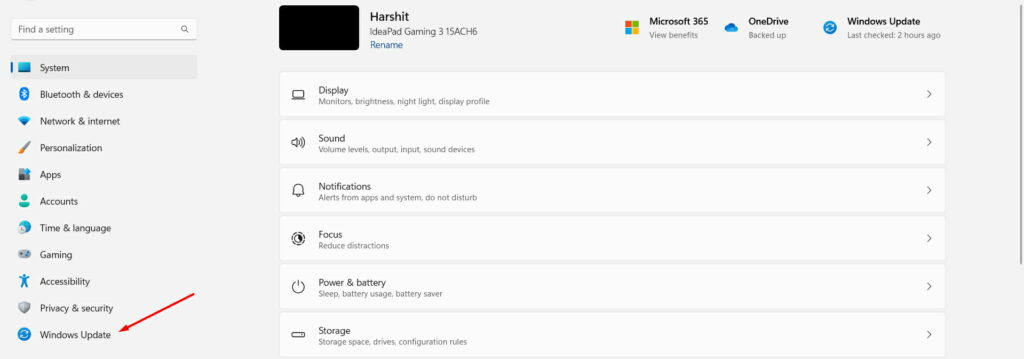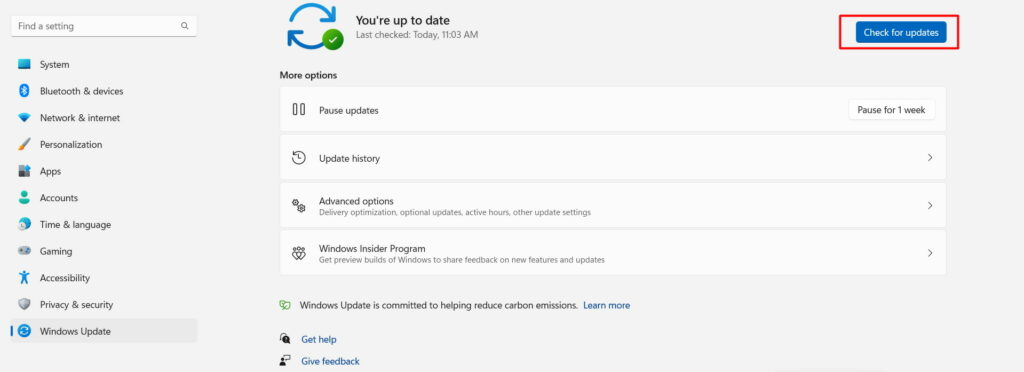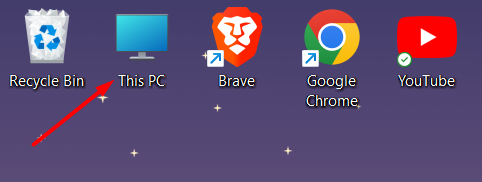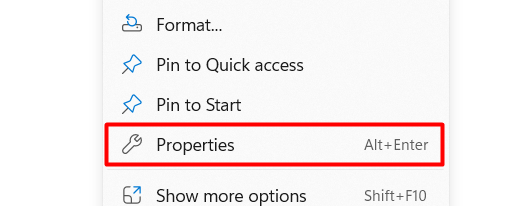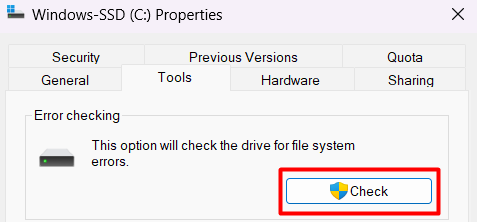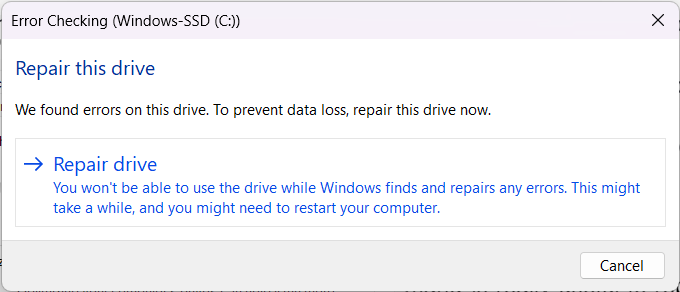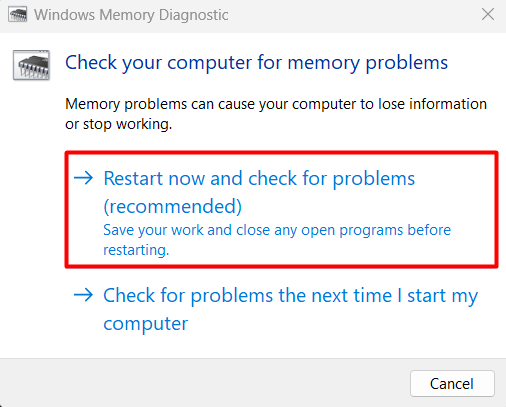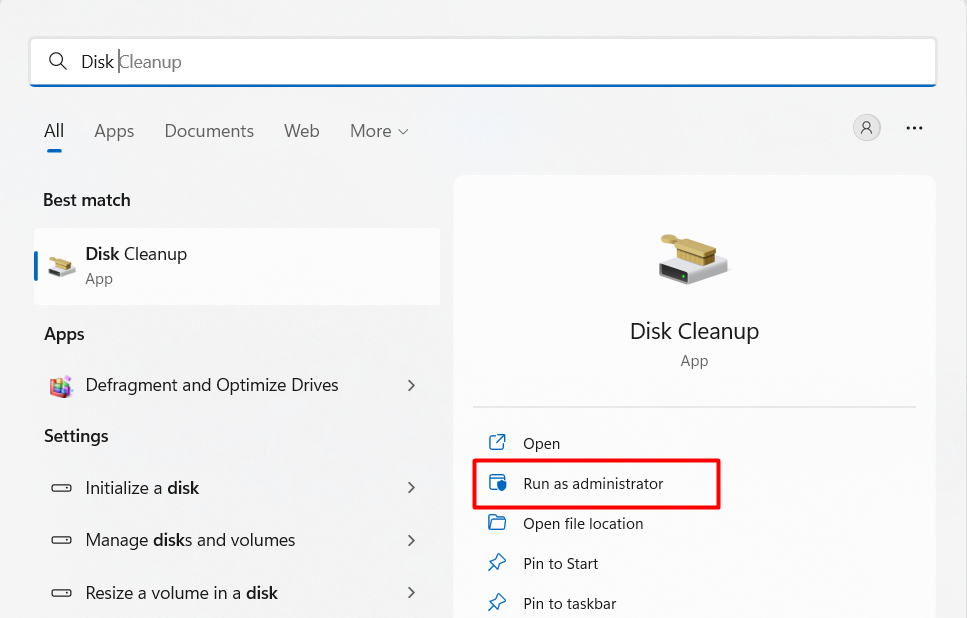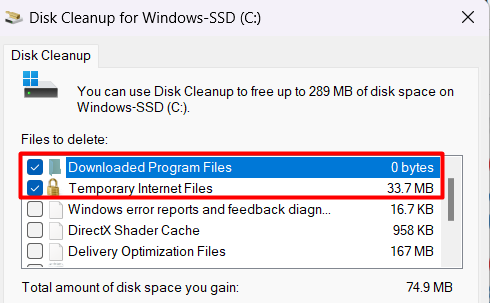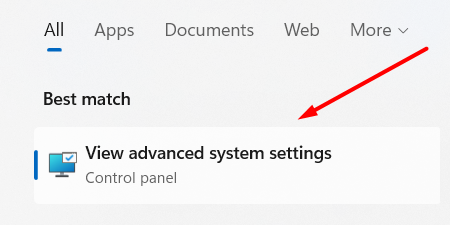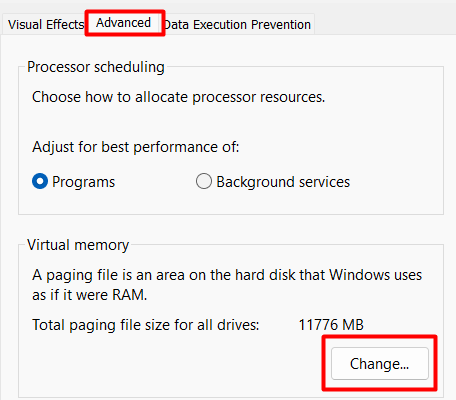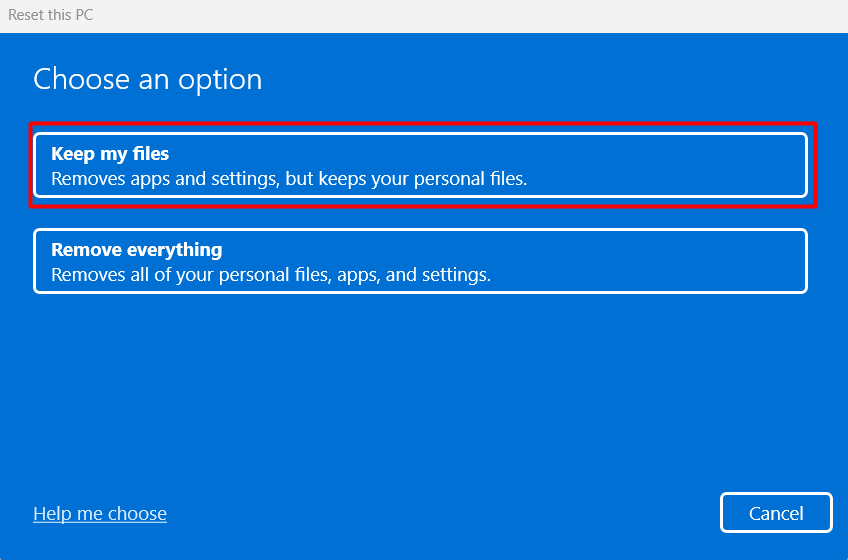The issue was present in the previous version of Windows and has now made its way to Windows 11. Sometimes, the BSOD error occurs because of storage issues or sometimes due to third-party applications. No matter what the cause is, it always ends up putting us in an irritating situation. Unfortunately, if you’re at the receiving end, we understand the inconvenience this issue must have caused. Well, not anymore. This is because we have some possible workarounds with us to fix the Blue Screen Of Death (BSOD) error in Windows 11. Here in this article, we’ll be sharing all the fixes with you, along with some causes of this issue.
What Causes the Blue Screen Of Death in Windows 11?
Here are some of the most common causes of BSOD error.
Hardware Device Causing Issues Incompatible Windows Update Memory Error or Problem in RAM Damaged Installation Files Disk Errors Outdated Drivers Fault in Drivers Interruptions From Third-party Software System Infected From Viruses & Malware Problematic BIOS Settings
What Kind Of Blue Screen Of Death Error You’re Getting?
All Windows users experience different BSOD errors and each error occurs because of a different reason. Thus, it’s challenging to find and list all the BSOD errors here. But, we have experienced some of the most common BSOD errors ourselves, so we can list those here.
APC_INDEX_MISMATCH STORE_DATA_STRUCTURE_CORRUPTION WDF_VIOLATION SESSION_INITIALIZATION_FAILED PFN_LIST_CORRUPT PAGE_FAULT_IN_NONPAGED_AREA
By the way, which stop error code was displayed on the display when the blue screen appeared?
Fix Blue Screen Of Death (BSOD) Error in Windows 11
Here are some tried and tested solutions to fix the Blue Screen Of Death (BSOD) error in Windows 11.
1. Disconnect Non-essential Hardware Devices
Sometimes the BSOD occurs because of faulty hardware devices connected to the PC. This could be the same with you and can only be verified by checking all the external devices thoroughly. The most handier way to determine the faulty device is by disconnecting all external hardware devices one by one and checking the status of the issue at the same time. Quick Tip: You can try disconnecting all those hardware devices that don’t help the system reboot.
2. Scan for Viruses or Malware
Viruses and malware can also be the root cause of the BSOD error. Hence, it becomes important to ensure that your system is virus-free. It’s essential to perform regular viruses or malware scans. You can use the integrated Virus & threat protection tool to ensure this. We have demonstrated the same in the mentioned steps.
- First, head to the Windows Security settings.
- Click on Virus & threat protection to open the built-in antivirus.
- Now, click on Quick scan to command the scanner to search for viruses and malware in the system.
- Wait until the scan results are displayed on the screen. Based on the results, you can delete the virus from the system.
3. Update Your Windows 11 System
Sometimes, the resolution of the issue lies behind the pending system updates. It’s always advisable to keep the Windows system up-to-date to avoid errors. You can update your Windows 11 PC by following the mentioned steps.
- Press the Windows + I key to open the Settings app.
- Now, move to the Windows Update section.
- Click the Check for updates button to request the system search for new Windows 11 updates. Notably, If there would be any pending updates, they can be installed by clicking on the Download & Install button. Once the pending updates are installed, restart your Windows 11 PC at least 2-3 times continuously to conclude whether the BSOD error is resolved or not.
4. Uninstall Conflicting Third-party Software
In some cases, it’s found that the BSOD error occurs either because of a third-party app or the installation of a new third-party application. If the error occurs because of software, we always recommend removing the program from the system. Below are the steps to uninstall the software from your Windows 11 PC.
- Open the Settings app and head to the Apps section.
- Then, click on Installed apps and search for the application you want to delete from the system.
- After that, click on the three dots next to the application and select Uninstall.
5. Update & Uninstall the System Drivers
Outdated drivers could also be one of the reasons for BSOD error on your Windows 11 PC. You need to ensure that all Windows drivers are updated and bug-free. This can only be assured by updating the current drivers following the below-mentioned steps.
- Open the Device Manager.
- Now, select the hardware driver in the Device Manager that needs to be updated.
- Once selected, right-click on the selected driver.
- Click on the Update driver and then Search automatically for drivers option to update the select hardware driver automatically. If updating the driver doesn’t resolve the issue, we suggest reinstalling them. In that case, you need to select the Uninstall device from the options that come after right-clicking on the driver. Once done, click the Scan for hardware changes icon in the ribbon menu to reinstall the deleted driver. Now, check the status of the issue by restarting the system twice or thrice in a row.
6. Check For Disk Errors
Disk errors are among the common causes of the Blue Screen Of Death error. It’s possible that your hard disk has some faults or errors that led to this situation. If that’s the case, then it’s important to fix them as early as possible using the below-mentioned steps.
- First, open This PC app.
- Select the drive from the left navigation pane to scan for errors.
- Then, right-click on the hard drive and select Properties from the context menu.
- Now, head to the Tools section and click on Check under the Error checking section.
- Lastly, click on the Repair drive option to start the drive repairing process. Notably, it might take some time to repair the drive and also reboot the system.
7. Repair System Files & Image Using SFC & DISM Scan
The System File Checker scan replaces all the corrupted system files with good ones and ensures there are no damaged files in the system. At the same time, the DISM scan command repairs the system image. You can use both commands to resolve all kinds of errors with system files. Follow the below-mentioned steps to run both commands.
- Open the Terminal app with administrative rights.
- Then, copy-paste the mentioned command in the Command Prompt: Once the command is executed, the system will start repairing the system image. After that, run the below-mentioned command to replace all corrupted system files. Once all the steps are completed, restart the system and check the status of the issue.
8. Run the Windows Memory Diagnostic Tool
Some BSOD errors appear because of issues with the system memory. You need to ensure there are no errors with the system’s memory. Windows Memory Diagnostic is an ideal tool to ensure the same. Follow the below-mentioned steps to use it.
- Open the Windows Memory Diagnostic tool.
- Once the tool is opened, click on the Restart now and check for problems (recommended) option. That’s it. Your Windows 11 PC may take time to scan the memory to check for errors and other issues.
9. Disable Fast Startup
Fast Startup is a great functionality in Windows that prevents non-essential apps and processes from loading at the time of reboot to help the PC reboot faster. The feature is useful. However, sometimes it unexpectedly closes the essential applications, which leads to BSOD issue. You can try disabling the Fast Startup option following the below-mentioned steps to make sure it is not the fast startup causing the issue.
- Open the Control Panel app and click on System and Security.
- Now, select Power Options and then click on Choose what closing the lid does option from the left-sidebar.
- Click on Change settings that are currently unavailable.
- Now, uncheck the Turn on fast startup (recommended) checkbox.
- Click on the Save Changes button and restart the PC.
10. Delete Unusual Files Using Disk Cleanup
PAGE_FAULT_IN_NONPAGED_AREA is one of the most common BSOD errors that happen because of storage-related issues. If the same code is mentioned on the blue screen, it’s possibly because of insufficient system storage. You can use the Disk Cleanup tool to delete unusual data from the system, such as corrupt thumbnails. Follow along to learn how to use the Disk Cleanup tool.
- First, open the Disk Cleanup tool as an administrator.
- Now, tick the data you want to delete in the Files to delete section.
- Then, click on Clean up system files to clean the selected data.
- In the end, restart the PC around 2-3 times continuously to see if the BSOD error is resolved.
11. Increase Virtual Memory of Windows 11
Windows systems use virtual memory to perform essential tasks that help the system run correctly. Sometimes, it requires more virtual memory to perform essential tasks. Also, it creates BSOD issues when it doesn’t get enough memory. You can try assigning more memory to your Windows 11 PC following the below-mentioned steps.
- To do so, open the Windows Search Bar, type View advanced system settings, and press the Enter key.
- Now, click on the Settings button under the Performance tab.
- Then, head to the Advanced tab and click on Change.
- Now, uncheck the Automatically manage paging file size for all drives checkbox.
- After that, check the Custom Size checkbox.
- Now, enter the amount of memory in the Initial size and Maximum size text boxes.
- Click on Set and OK.
- And, in the end, restart the computer twice or thrice to monitor if the issue is resolved or not.
12. Rebuild Master Boot Record (MBR)
Master Boot Record is crucial in identifying where the operating system is saved on the disk, so it can boot properly. It could be possible that the MBR has some issues, which is why it’s unable to boot the system normally. In that case, you can try rebuilding the MBR to ensure it’s in the correct state. Follow the below-mentioned steps to do the same.
- Open the Command Prompt app.
- First, copy-paste bootrec /Fixmbr in the Command Prompt and press the Enter key.
- Then, type the bootrec /FixBoot command in the CMD and hit Enter.
- After that, type bootrec /ScanOs and press the Enter key.
- Finally, type bootrec /RebuildBcd and press the Enter key.
- Now, restart the system and check the status of the issue.
13. Reset & Reinstall the Windows 11 System
You can reset your Windows 11 PC without affecting the system’s data. When nothing works, resetting the system always works out. Follow the below-mentioned steps to restore the system and set all the settings back to default.
- Open the Recovery settings.
- Click on Reset PC under the Reset this PC section.
- Lastly, click on Keep my files and format the PC.
How Do I Fix a Blue Screen on Windows 11?
One of the best solutions to overcome the issue is to run the Windows Memory Diagnostic tool. It’s an ideal tool to fix the system when it becomes unstable or frequently shows a BSOD error.
Why Does Blue Screen Appear on Windows 11?
The Blue Screen error appears because of different reasons. In most cases, it occurs when there are memory-related issues. Either the PC isn’t getting enough space to process tasks, or a tool is trying to use the system-assigned memory.
How Do I Fix Stop Error in Windows 11?
You should first perform a virus and malware scan using the built-in Virus & threat protection tool. Once done, you can try updating all the hardware drivers to check if this resolves the issue.
Is Blue Screen of Death Fixable?
Luckily, 90% of the BSOD errors are easily fixable. And interestingly, these errors can be fixed by trying workarounds, such as disconnecting, disabling, or uninstalling related devices, drivers, applications, or updates.
Does BSOD Damage Your Computer?
The BSOD error doesn’t harm your Windows 11 PC’s hardware or software. However, it can ruin your day by appearing again and again.
Fixed Blue Screen Of Death Error on Windows 11
Getting the Blue Screen Of Death error, again and again, is one of the most irritating Windows 11 issues. Fortunately, this is a common error, so solutions are easily available. There are some solutions that help you eliminate the Blue Screen Of Death (BSOD) error in Windows 11. You can attempt the above-mentioned workarounds and check if the issue is resolved now. Luckily, these solutions worked out for many Windows 11 users. We hope this article will help you get relief from the BSOD error on your Windows 11 PC. By the way, let us know the solutions that get the job done for you.

